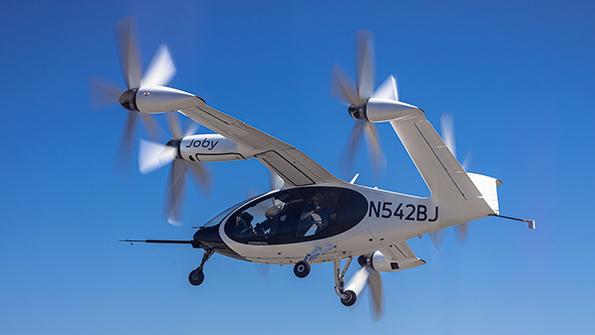
Eclipse Aviation and DayJet had a symbiotic relationship in 2008. Eclipse produced a very light jet loaded with technology for a breakthrough price of less than $2 million. DayJet was a Part 135 carrier aiming to connect poorly served business centers—initially in Florida—with an on-demand air-taxi business model. Eclipse needed huge volumes of orders to underpin its ultra-low pricing and garnered 1,400 of its 2,200 orders from DayJet. Hopes were high that a revolution was underway, until DayJet suddenly declared bankruptcy in September 2008. Eclipse followed suit two months later.
This episode reminds us that even revolutionary aircraft need customers with viable business models to survive. This raises the question: As so many electric vertical-takeoff-and-landing (eVTOL) vehicles are nearing certification, how realistic are their operators’ business plans?
Consider the case of Lilium, which aims to redefine urban and regional air transportation, initially targeting those same “underserved” DayJet Florida city connections. It expects that its six-passenger Lilium Jet can offer $2.25 per-seat-mile pricing while operating 10 hr. per day. Many twin-aisles are lucky to achieve this level of utilization, and Lilium plans to do so with much shorter flights (its jet’s range is 155 mi.). Lilium faces the same challenges DayJet did—maintaining high load factors in thin markets and the back-breaking costs of deadheading.
The assumptions underlying Volocopter’s two-passenger VoloCity are similarly unrealistic. The 18-rotor eVTOL, designed for short urban flights, has a range of just over 20 mi. and similar seat-mile costs to the Lilium Jet. Its annual utilization is 3,000 hr. per year, comparable to a single-aisle jetliner.
A third high-profile eVTOL is the Joby S4, a four-passenger aircraft with a speed of 200 mph and range of 150 mi. Joby’s anticipated seat-mile pricing is about $3 with annual utilization of 2,500 hr.—more than a typical regional jet.
Another startup, Archer, made headlines in November when United Airlines announced plans to launch its first eVTOL route in New York in 2025, linking Newark Liberty International Airport and downtown Manhattan using its new Midnight aircraft.
Why do these initial business plans include such extraordinary utilization levels? Most likely it is to offset amortization of high eVTOL hull prices, which at $2-4 million are substantially higher than conventional helicopters. A Robinson R44 costs less than $500,000. If there is such pent-up demand for this service, why isn’t the world covered with R44 air taxis?
The situation smacks of what AeroDynamic Advisory Managing Director Richard Aboulafia calls the Unsustainable Life Spiral: Someone offers a product or service with impossibly low unit costs. These low costs are predicated on impossibly high production rates or impossibly high utilization assumptions. These impossibly high utilization/production numbers are in turn predicated on impossibly low unit costs. Financial carnage follows.
The concept of moving passengers from busy urban centers to airports isn’t new. New York Airways connected midtown Manhattan with John F. Kennedy International Airport, Newark, Teterboro Airport and White Plains Airport from 1956 to 1979 before accidents led to its bankruptcy. After a 40-year hiatus, this service recently reemerged thanks to Blade, which flies 12,000 passengers per year between midtown and JFK and Newark airports with conventional helicopters. Its value proposition is compelling: For a $195 one-way fare, it can substitute a 5-min. flight for up to a 2-hr. drive at roughly double the cost of an Uber. The direct operating cost per flight is about $500—some $300 in operating costs and $200 for landing fees. Its break-even load factor is 2.6 passengers per flight.
Blade plans to transition from conventional helicopters to eVTOLs. Its management anticipates that the new technology initially will enable a modest reduction in flying costs on key routes and expects further savings over time as battery costs come down. That same midtown-JFK flight will have direct operating costs of $430, a 14% reduction, or $33 per mile for the 13-mi. journey. This is hardly revolutionary enough to underpin forecasted eVTOL market growth to tens of billions of dollars by 2030.
Blade deserves our attention. It is a real, publicly traded urban air mobility operator initially targeting markets in New York; Vancouver, Canada; Nice, France-Monaco; and Mumbai-Pune in India. This service is nearing breakeven with annual revenue of more than $30 million. If it cannot successfully scale and become profitable, then it is hard to see how eVTOL startups will be successful elsewhere over the next decade.
While industry enthusiasts fawn over sexy new eVTOL designs, their operators are about to run into the cold, hard reality of economics, like DayJet did 14 years ago. There will be blood.




Comments
Even swapped batteries take time, and you probably need a spare plus a charger at each terminal, which drives the capital costs way up.